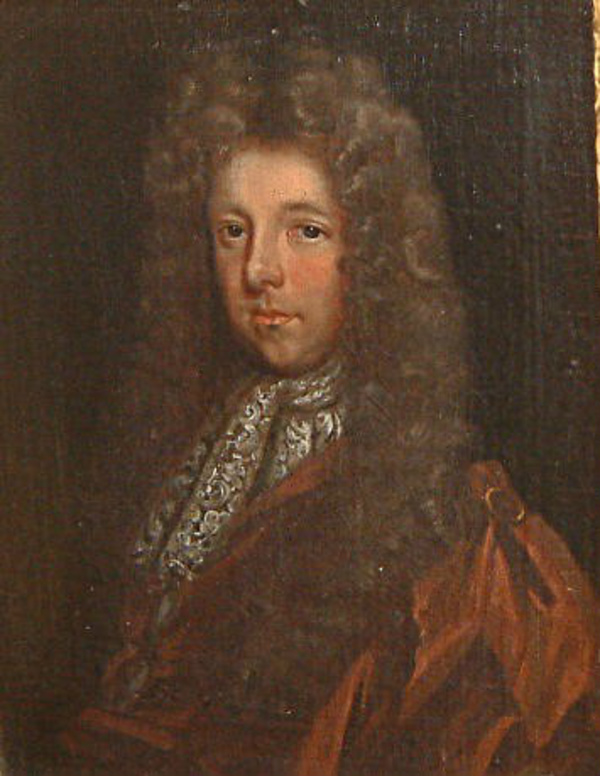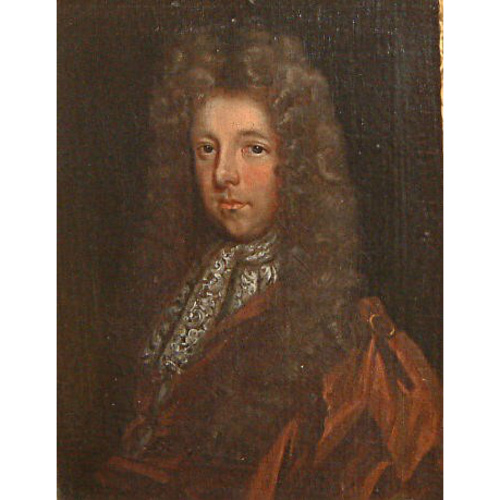
Source: Link
YONGE, JAMES, naval surgeon, diarist, and medical writer, who left an account of his practice in the Newfoundland fisheries; b. 27 Feb. 1646/47 in Plymouth, England; d. there 25 July 1721.
He was the second son of John Yonge (d. 13 Oct. 1679), surgeon and medical practitioner in Plymouth and his wife Joanna (1618–1700), daughter of Nicholas Blackaller of Sharpham, Devonshire. Although he had little help or encouragement from his father and his formal education was limited to two years spent at the grammar school in Plymouth, James Yonge achieved distinction in his profession, his career reaching its peak in 1702, when he was elected a fellow of the Royal Society and a licentiate of the Royal College of Physicians. He was the author of several papers published in the Philosophical Transactions of the Royal Society, including the first report of the use of vacuum extraction in obstetrics, a valuable technique only recently rediscovered. His introduction into surgery of the “flap technique” in amputating a limb is recorded in his book Currus triumphalis e terebinthe (1679). His surgical skill is also apparent in his account of successful operations on skull fractures, Wounds of the brain proved curable (1682).
Just before his eleventh birthday he was apprenticed for eight years to Silvester Richmond, surgeon to the naval frigate Constant Warwick, and when his master retired to Liverpool in 1662, Yonge returned to Plymouth and was bound apprentice for seven years to his father, a servitude he did not much like. In February 1663 he set out in the Reformation on his first voyage to Newfoundland as surgeon to one of the small parties of Devon men who regularly spent the summer fishing off the coast there. From his earliest days at sea he made notes and drawings of all the places he visited, afterwards digested into a narrative journal which was first published in 1963. It is to this journal that we are indebted for the account of his Newfoundland voyages. His experiences there also provided the basis for his pamphlet Some considerations touching the debate, etc. concerning the Newfoundland trade (1670).
In the account of his first voyage (pp.54–60) he gives a detailed description of all the tasks carried out by the fishermen. Their base was Renoose (Renews), with a smaller group at Firmoose (Fermeuse). “As soon as we resolve to fish here, the ship is all unrigged, and in the snow and cold all the men go into the woods to cut timber, fir, spruce, and birch being here plentiful. With this they build stages, flakes, cookroom, and houses.” Yonge gives us a sketch (plate 411) of the stage on which the cod was landed from the boats. “The boat is 3 or 4 tons and will carry 1,000 or 1,200 cod, but . . . three men will row these great boats a long way.” The splitters work at a table on the stage. “There are some that will split incredibly swift, 24 score in half an hour.” The cod-liver oil is collected in a great chest and the opened fish salted and dried on the beach on flakes (plate 4B) before loading. “The men in these voyages have no wages but are paid after this manner: the owners have two thirds and the men one third; this one third is divided into so many shares as there are men in the ship. . . . The manner of paying the chyrurgeon is this: the owners give 5, 6, 7, or 9 pounds on the hand [cash down] towards the chest, the master gives him a share, and every man half-a-crown, out of his share, besides which he has one hundred of poor Jack [dried fish] from the whole.”
Among the “diseases of this country” which Yonge describes, the most dangerous was scurvy, which he treated by giving the sufferers a variety of green leaves steeped in beer. “The cause of this so common a malady is partly from the great mutation of the weather, which when we first come is very cold, and in July shall be intolerably hot, partly from the aqueous and crude nourishment, fish, and from sudden colds after the fatigues of labour, but mostly from the air, which is crude, foggy and scorbutick.” At the height of the summer, when the men “rest not above two hours in a night,” they are plagued by “muscetoes,” and the men suffer violent nose-bleeds from eating too much cods’ liver. “In the winter the planters employ themselves in getting fish, sawing deal boards, making oars, catching beaver and fowling. They have innumerable duck, several geese, wild pigeons, partridge, hares, etc.” Yonge also mentions having seen seal and penguin.
In 1664 he again visited Newfoundland, this time in the Robert Bonadventure, which arrived at Petty Harbour in June with salt and left St John’s in August with 20 tons of cod which was later sold in Genoa (pp.67–70). Early in June 1666, while sailing to Boston, his ship was captured by the Dutch, and Yonge was taken with the rest of the crew as prisoner-of-war to Rotterdam. His journal contains a graphic account of his sufferings (pp.90–106), but by the end of the year he was exchanged for a Dutch prisoner held in England and arrived in London while the devastated city was still smoking after the Great Fire. In 1669 he again spent the whole season in Newfoundland (pp. 112–21). He names the boats and their owners, there being a total of 132 boats and 660 men; planters and “interlopers” added another 35 boats and 175 men. “I never was better employed,” wrote Yonge, “nor lived happier. . .. Nothing happened memorable in the season but that I got by private practice above four score pounds, that we made a reasonable voyage, so that I think for my summer’s work I might have above £100.”
The following season proved equally successful (pp.124–38) but severe storms and ice delayed their arrival at St John’s until late April. Despite the fact that “our people brought the small pocks among the inhabitants” – all of whom recovered with Yonge’s care – he had sufficient leisure to read and to draft his pamphlet on the Newfoundland trade. He tells us that the ships fishing in St John’s numbered 12, with 630 men. He also looked after the men at Petty Harbour, a nine-mile walk and “a very ill way, up hill and down hill, through marshes, over rocks, and in many places without paths.” It was on one of these walks that he saw a “beaver house” which he describes. It appears that he also had at least one meal of beaver meat: “their flesh eats sweet if the fishy rancidness be boiled out, as of a turtle; but there is no venom in them as those authors ridiculously assert.”
Yonge’s savings from his Newfoundland practice were now sufficient to enable him to settle in practice in Plymouth and on 28 March 1671 he married Jane, daughter of Thomas Crampporn of Buckland Monachorum in Devonshire. He was the first surgeon to be appointed to the naval hospital in Plymouth and in 1674 he became deputy surgeon-general to the navy. As one of the city’s leading citizens he was elected mayor of Plymouth in 1694 and a memorial to him may still be seen in the parish church of St Andrew, where his body was buried. His son James (1672–1745), the eldest of five children, married as his second wife, Mary, daughter and heir of John Upton of Puslinch in Devon. The Yonge family still resides at Puslinch, where is preserved a fine portrait of James Yonge, reproduced as the frontispiece of Plymouth memoires, published by the Plymouth Institution in 1951.
The article on Yonge in the DNB, with the sources cited there, contains errors, notably the wrong date of birth. The only authentic source of information about Yonge and his work, apart from his published writings, is his own Journal, the original manuscript of which is preserved in the Plymouth Athenaeum (formerly the Plymouth Institution), another copy being kept by the Yonge family at Puslinch. This journal was published in its entirety (except for some of his drawings and sketch-maps) as [James Yonge], The journal of James Yonge [1647–1721] Plymouth surgeon, ed. F. N. L. Poynter (London, 1963). The page references given in the article above are to this edition.
Cite This Article
F. N. L. Poynter, “YONGE, JAMES (1646/47-1721),” in Dictionary of Canadian Biography, vol. 2, University of Toronto/Université Laval, 2003–, accessed January 5, 2025, https://www.biographi.ca/en/bio/yonge_james_2E.html.
The citation above shows the format for footnotes and endnotes according to the Chicago manual of style (16th edition). Information to be used in other citation formats:
| Permalink: | https://www.biographi.ca/en/bio/yonge_james_2E.html |
| Author of Article: | F. N. L. Poynter |
| Title of Article: | YONGE, JAMES (1646/47-1721) |
| Publication Name: | Dictionary of Canadian Biography, vol. 2 |
| Publisher: | University of Toronto/Université Laval |
| Year of publication: | 1969 |
| Year of revision: | 1982 |
| Access Date: | January 5, 2025 |



